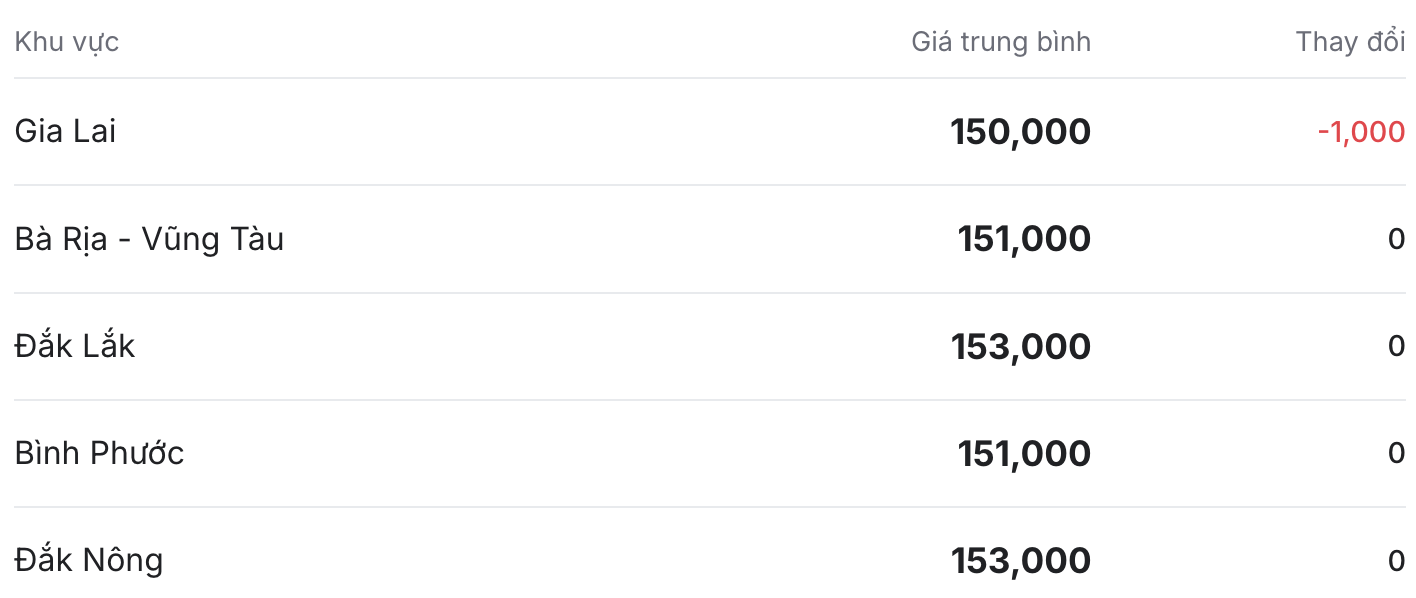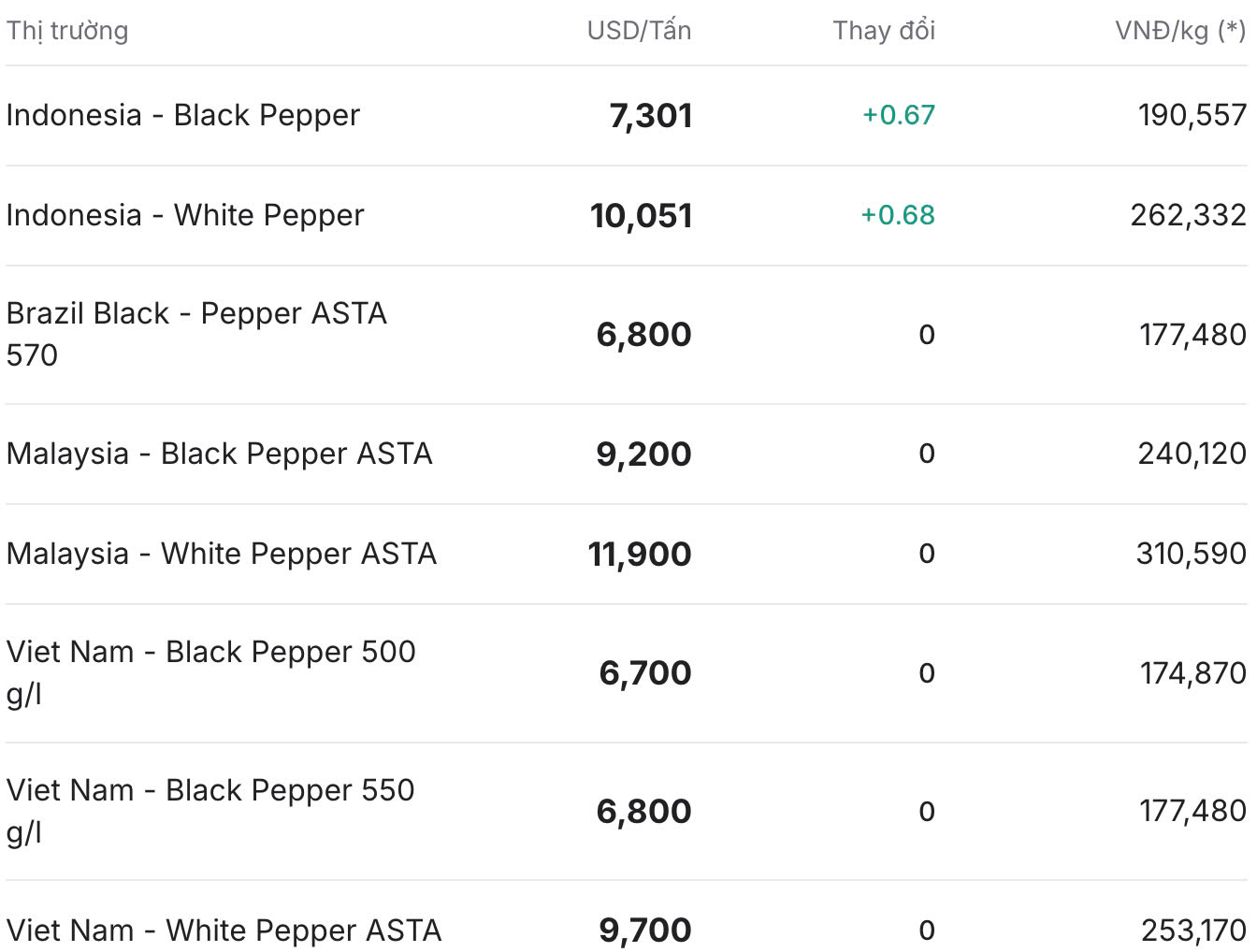Domestic pepper prices: Stable except for Gia Lai province
As of 12:30 today (May 19), the domestic pepper market is mostly stable, except for Gia Lai province, with an average decrease of VND 200/kg. Currently, the purchase price of pepper is recorded at a price of 150,000 - 153,000 VND/kg.
Pepper prices in Dak Lak and Dak Nong are both anchored at 153,000 VND/kg, which are the areas with the highest pepper prices in the country.
Notably, Binh Phuoc and Ba Ria - Vung Tau kept the same price of 151,000 VND/kg. Meanwhile, pepper purchasing prices in Gia Lai province recorded a decrease of VND 1,000/kg, bringing the price to VND 150,000/kg.

World pepper prices: Maintain the increase
In the world market, pepper prices generally continue to remain stable in most regions. In the Indonesian market alone, black pepper prices remained at an additional price increase of 0.67% at 7,301 USD/ton (equivalent to 190,557 VND/kg); white pepper listed at 10,051 USD/ton (about 262,332 VND/kg).
In Vietnam, the export price of black pepper of 500 g/l and 550 g/l remains unchanged at 6,700 - 6,800 USD/ton (equivalent to 174,870 - 177,480 VND/kg). ASTA white pepper prices also remain unchanged, at 9,700 USD/ton (about 253,170 VND/kg).
In the same direction, other markets such as Brazil and Malaysia did not record any fluctuations. Malaysia's white rice continues to hold the highest price globally at 11,900 USD/ton (equivalent to 310,590 VND/kg).

Assessment and forecast
Domestic pepper prices at the beginning of the new week remained stable, but experts said that the price level is still anchored at a high level, a clear sign that supply is gradually narrowing after the harvest.
Meanwhile, demand from major markets such as the Middle East and Europe is forecast to increase sharply in the second quarter of 2025, creating more pressure on goods sources. However, the domestic market is still quite cautious, weak purchasing power has caused pepper prices to not break out as expected.
It is forecasted that from now until the end of the year, supply and demand will continue to play a key role in regulating the market. In fact, the global pepper supply is still in short supply, this is a positive signal that helps pepper prices recover in the medium and long term.











